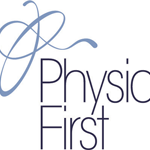What is De Quervain’s Tenosynovitis?
De Quervain’s tenosynovitis affects two thumb tendons: the Abductor Pollicis Longus (APL) and the Extensor Pollicis Brevis (EPB). The APL and EPB tendons travel side by side along the inside edge of the wrist. They pass through a synovial tunnel near the thumb side of your wrist. The tunnel helps hold the tendons in place.
This tunnel is lined with a membrane called a tenosynovium, which ensures in a healthy wrist the tendons can glide smoothly across one another within the tunnel. However where there is a combination of overuse and poor posture these tendons are at risk of inflammation.
Causes of de Quervain’s Tenosynovitis
o Repetitive hand or thumb movements especially pincer movements, squeezing or grasping
o Holding the wrist in positions that compress the tunnel
o The presence of scar tissue which also compromises the movement of the tendon
o An underlying joint problem which affects the local joint mechanics and can increase soft tissue strain

Symptoms of de Quervain’s Tenosynovitis
De Quervain’s usually starts as soreness on the thumb side of the forearm, near the wrist. When left untreated, pain may spread up the forearm or further down into the wrist and thumb.
The two tendons may actually begin to creak as they move through the constricted tunnel. This noise is called crepitus. You may notice swelling along the tunnel near the edge of the wrist. Grasping objects with the thumb and hand may become increasingly painful.
De Quervain’s Tenosynovitis Diagnosis?
Your Physiotherapist will help to diagnose and confirm De Quervains tenosynovitis by undertaking a clinical examination. The Finklestein test is one of the best ways to make the diagnosis.
Treatment of de Quervain’s Tenosynovitis
Your physiotherapist is the best person to individually advise you how to treat your de Quervain’s tenosynovitis. They can utilise various local modalities and soft tissue treatment options to assist your recovery. Until you are assessed, please try the following.
Ideally you should rest and avoid all activities that cause your symptoms. In particular exert care with repetitive hand motions such as grasping, wringing, turning or twisting movements of your hands. Aim to keep your wrist in a midline position for activities. It may be necessary to purchase a splint which will offer greater protection and facilitate a faster recovery.





